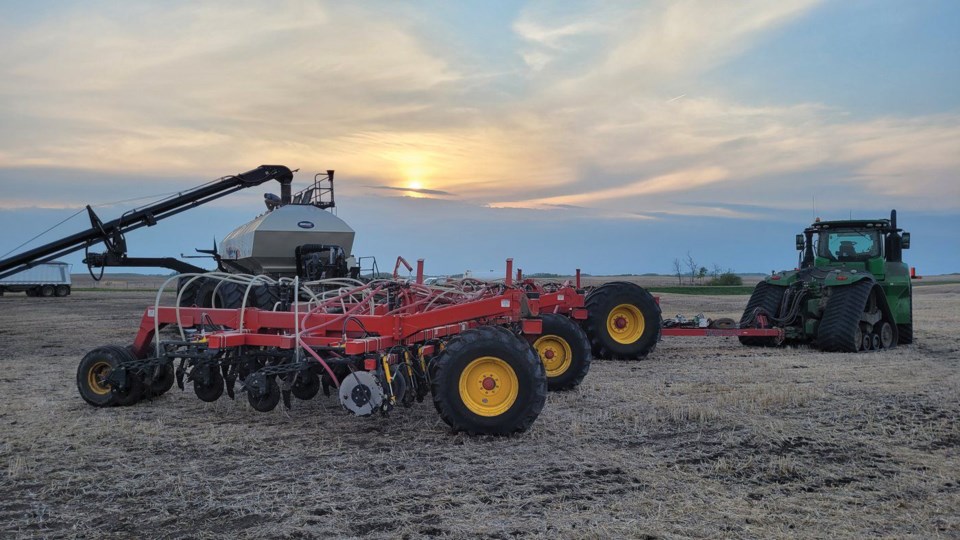REGINA — Spring seeding is well underway across Saskatchewan, with 18 per cent of the 2025 crop now planted.
The current provincial seeding progress of 18 per cent is ahead of the five-year average (2020-2024) of 10 per cent and the 10-year average (2015-2024) of 12 per cent. Despite multiple storms throughout the province in April, producers were able to get into their fields and make rapid progress over the last couple of weeks.
The southwest region is the furthest advanced with 43 per cent seeded so far and the first seeded crops starting to emerge. The northwest and southeast regions are also making good progress with 15 per cent and 14 per cent of seeding complete, respectively. The west-central region is reporting 11 per cent seeding completion, and the east-central and northeast regions are both reporting nine per cent of seeding complete.
Pulse crops are leading in seeding completion, with lentils at 34 per cent seeded, field peas at 31 per cent and chickpeas at 28 per cent. Durum is at 33 per cent seeded, triticale at 31 per cent, barley at 19 per cent, and spring wheat at 13 per cent. Oats and canary seed both reported at four per cent seeding complete. Mustard leads amongst oilseed crops for seeding completion at 21 per cent, followed by canola at 10 per cent and flax at six per cent. Perennial forage is reported at five per cent seeded, and there are no reports of soybean seeding completion currently.
Limited moisture fell throughout much of the province over the last week, which allowed field operations to progress rapidly through many regions. The highest reported rainfall was in the Alida area at 16 millimetres followed by the Lafleche area at 12 mm.
Although provincial topsoil moisture conditions are mainly at adequate levels, there are some areas in the province experiencing drier conditions. Topsoil moisture for cropland is currently rated at three per cent surplus, 78 per cent adequate, 16 per cent short and three per cent very short. Hayland is rated at one per cent surplus, 71 per cent adequate, 22 per cent short and six per cent very short. Pasture topsoil moisture conditions are reported at one per cent surplus, 68 per cent adequate, 23 per cent short and eight per cent very short.
Livestock producers are hopeful for moisture in the coming weeks to help support water supplies and pasture conditions throughout the season. Spring runoff was reported in late April, with provincial data indicating 30 per cent below normal, 55 per cent normal and 15 per cent above normal. Seventy-six per cent of crop reporters indicated that the amount of runoff received would be sufficient to replenish dugouts and other water bodies within their area. Notably within the southwest region, 52 per cent of respondents indicated that the amount of runoff may not be sufficient to replenish dugouts within their area.
Additionally, pasture conditions were also reported in late April, with provincial data indicating six per cent of pastures to be in excellent condition, 42 per cent reported to be in good condition, 36 per cent reported as in fair condition, 13 per cent reported as poor, and three per cent very poor.
With the warm, dry weather, producers are busy in their fields with seeding, pre-seed spraying for weed control, harrowing and rock picking. Livestock producers are busy with calving with some producers finishing up for the season. As cattle are 小蓝视频 moved out to pasture, producers are also checking and fixing fences. As spring progresses, producers are reminded to be safe during their field activities and watch for overhead powerlines while moving equipment in fields and farmyards this spring.
A complete, printable version of the Crop Report is available online - Download .
Follow the 2025 Crop Report on Twitter at @SKAgriculture.

